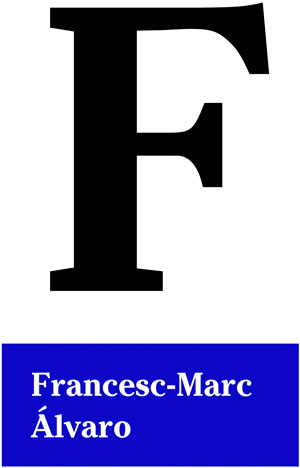07 Dec 2011 Els ossos del tirà
There is no way out. Whether we like it or not, we live amongst the dead. One might think that the severe economic and social crisis somehow manages to hide the rest of the issues around us. But this is not true. Who cares about General Franco’s bones? The immediate answer is straightforward: nobody, except his family and a couple of regime nostalgics. But this is a deceitful and merely palliative answer. We must be more careful in our reply: the remains of a dictator who left a deep mark on our recent history are a matter which our society cannot fail to question. Fine: most people currently worry about budget cuts, mortgages and the threat of unemployment. But we are always a result of our history, even when history seems to bother us and the present is too intense for us to be able to relive the toughest experiences of our parents and grandparents. We are not interested in Franco, but the influence of Franco’s name on all of us runs very deep.
An official report on the Valle de los Caídos was published a few days ago. This report had been produced by a group of experts and commissioned by the Spanish Ministry of the Presidency. In it are a series of recommendations to the central government in response to its intention of carrying out a “comprehensive transformation of the significance” of the site to “provide a completely new interpretation of this monumental ensemble” which “puts the victim at the forefront through displaying documents and recalling through symbols the ethical void that the Spanish Civil War generated through death”. The principle inspiring the experts is that of “explaining without destroying” in order to transform the mausoleum of the dictatorship in to a true memorial of reconciliation whose main figures are all of those who died in the conflict on both sides and with equal treatment. At the same time, works must be carried out to prevent the temple’s structure and sculptures from deteriorating further. These works could amount to 13 million euros.
With sound judgment, the group of experts warns that in order to invest the Valle de los Caídos with a new meaning, this space must be reserved exclusively to the dead of the Civil War; and this implies the transfer of General Franco’s remains “to a site designated by his family or, where appropriate, to a site considered dignified and adequate”. With regard to the remains of José Antonio Primo de Rivera, founder of Falange Española and executed during the war, the recommendation is for them not to have a prominent place within the basilica “given the equal dignity of all of those who are buried there”. These are well-reasoned conclusions motivated by common sense, but which put the ball back in the government’s court. The report was commissioned by PSOE leaders and will have to be considered by those of the People’s Party, who are just arriving to power. Some see this as a last poisoned chalice from Zapatero to Rajoy. Maybe or maybe not. In any case, it is sad and wicked that some on the right and some on the left use yesterday’s dead to try and prevail in the democratic battle.
Leaving partisanship to one side, we must be sincere and brave when it comes to reflecting on our history: what moment will be the least bad to relocate the bones of the tyrant so that they do not go on offending for many more years the memory of those who lost the war and of those who were the victims of the dictatorial repression? Any moment is and will be difficult, but Franco’s remains will need moving before we are devoured by collective shame.
The centrist governments of the transition did not relocate Franco’s remains. Neither did the cabinets which came later with president González. Years later, José María Aznar did nothing about the issue either and now Zapatero, who championed Republican memory, leaves the post without having moved the remains of the man who built an autocratic power which meant the death, imprisonment and exile of thousands of people. Franco’s tomb is still the symbol of a military victory which extended for almost forty years and for this reason it does not fit well with showing of respect to the memory of the defeated or with the democratic spirit. Those who every 20th November go on a pilgrimage to the Valle de los Caídos with their arm raised in salute are a reminder that the General’s tomb is a civil dishonour and toxic waste which contaminates coexistence, a dark place where the wounds of the war have not yet healed. The tribute celebrated every year by Franco supporters has no place within the Europe of freedom and Human Rights. And it would be beneficial too to the Spanish Catholic church if they likewise assumed the group of experts’ recommendations.
Despite the budget problems, the new central Government with Rajoy as president, should do everything possible to prevent the democratic Spanish right from being ambiguous in their condemnation of the Franco era. The redesigning of the Valle de los Caídos is the perfect opportunity for the PP to show a clearer attitude in this matter; because it is their ethical obligation, because they are intelligent and because they have the political necessity to distance themselves from the ghosts which still inhabit social and media environments supposedly close to the PP and whose attitude towards the dictatorship is that of keeping it outrageously current. Otherwise, the party will always lack the authority to utter certain discourses.
Some believe that moving Franco’s bones means reopening old wounds. I think, nonetheless, that the greatest wound is to carry on treating the tyrant like a glorious and beneficent hero.


